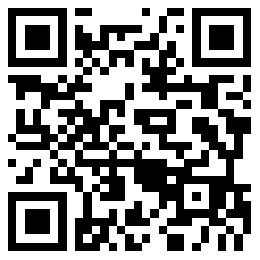Amazon's newest Kindle takes aim at newspapers
????Amazon hopes to convert readers of magazines and newspapers to its newest e-book reader, the Kindle DX.
????By Jessica Shambora
????The question of whether Amazon's Kindle will overhaul the news industry in the same way it has already begun to shake up book publishing may soon be answered.
????Amazon CEO Jeff Bezos introduced a third version of the Kindle electronic reader on Wednesday morning to a packed auditorium and flashbulbs at Pace University in lower Manhattan.
????The Kindle DX features a larger screen (two and a half times the size of the Kindle 2), a built-in PDF reader, and enhanced Internet navigation. It also has more storage than the Kindle 2 - Amazon says it will hold up to 3,500 books compared with 1,500 with the Kindle 2. It sells for $489, compared to $359 for the Kindle 2.
????Although the device is available for pre-order on Amazon.com, it is not expected to ship until summer.
????The DX's 9.7-inch display with auto rotation makes it possible to read newspapers and magazines in a format resembling the traditional paper versions, and offers a platform for textbooks. The DX's predecessor, the Kindle 2, featured a six-inch screen - ideal for reading paperbacks but not periodicals or academic texts. The larger screen and built-in PDF reader also streamline reading of professional and personal documents, from annual reports to music scores. The device maintains the original text flow, no scrolling, panning, or zooming required.
????Like earlier Kindles, the DX offers free wireless access and renders text and images in grayscale using e Ink technology, which saves battery use and avoids the glare of a backlit screen.
????Partnerships with publishers of periodicals and textbooks will also help to facilitate the transition of content to the digital world.
????Starting this summer, three newspapers - The New York Times, The Washington Post and The Boston Globe - will offer the Kindle DX at a reduced price to readers who live in areas where home-delivery is not available in exchange for long-term subscription commitments. Appearing on stage with Bezos, New York Times (NYT) publisher Arthur Sulzberger said, "We've known for a decade an e-reader product would offer the same satisfying experience as printed newspaper."
????Amazon (AMZN, Fortune 500) has also formed agreements with three textbook publishers that together represent 60% of the textbook market: Wiley (JWA), Pearson (PLO) and Cengage Learning. Six universities, including Case Western Reserve University, Arizona State and Princeton, have signed on to take part in a pilot program offering Kindles to students. The president of Case Western, Barbara Snyder, appeared at the event saying that the university believes that e-book technology has significant potential for textbooks and that "as a research university, we're bound to test our hypotheses."
????The Internet retailer's initial foray into the electronics space came in late 2007 with the introduction of the first Kindle. A second version of the reader was launched in early February, offering faster page loads, improved ergonomics, and more data storage.
????Though Amazon doesn't reveal how many Kindles it has sold, it does say that where digital editions are available, digital sales are now 35% of book sales. This is up from 13% prior to the launch of Kindle 2. Kindle also garnered an endorsement from Oprah last October, which helped it sell out prior to the holiday season for the second year in a row.
????The first two editions of the Kindle primarily target the book market, where Amazon has its roots, and they succeeded in injecting some growth into an industry in slow decline. But the implications for this third-generation Kindle are even greater because of the promise it holds for rescuing the beleaguered newspaper and magazine industries. Readers have flocked to the Internet where they can read content for free. The result has been a severe decline in subscriber and advertising revenues.
????By rendering newspaper and magazine content in a form close to its original layout, the Kindle DX may enable a return to the subscriber model, where readers would once again pay for content. The new design is also more conducive to displaying advertising.
????Skeptics say that in today's sophisticated world of netbooks and iPhones, electronic readers won't catch on until they offer color and video. (The CEO of Mountain View-based Plastic Logic, which is developing a large-screen e-reader, says that color screens are at least two years away.) As it is, they say, the screen on the device still loads too slowly for the graphic-laden pages of newspapers, magazines and textbooks.
????Then there is the issue of the device's high cost, which prevents it from reaching the mainstream. Some have suggested that using the savings on printing and delivery costs, publishers could subsidize the device for subscribers in the same way cell phone contracts are sold (like the pilot agreement with the newspapers outlined above). Even then, the task of retraining readers to pay for content they know they can read for free on the Internet still remains.
????Perhaps the biggest obstacle to this transition is the question of who controls the distribution of the content. While Amazon has been successful in signing on some publishers, many take issue with the company acting as a middleman, controlling the relationship with subscribers and setting prices. Gannett Co.'s (GCI, Fortune 500) USA Today and News Corp. (NWS, Fortune 500) are reportedly aligning themselves with Amazon's competitors, which include Plastic Logic and the Sony Reader, among others. Hearst is developing its own e-reader, which industry insiders say is likely to launch this year. Apple is also rumored to be working on a tablet device akin to the iPhone but with a larger screen.
????It now seems that all the hype about earlier Kindles has been a prelude to what we all knew was coming - the news industry's last great hope. The arrival of the Kindle DX brings us closer to answering the ultimate question: Can an affordable device be built, which offers such a superior user experience that consumers will once again be willing to pay for newspaper and magazine content?
????Says Bezos, "And it wouldn't be bad if we could inch our way toward a paperless society either."











